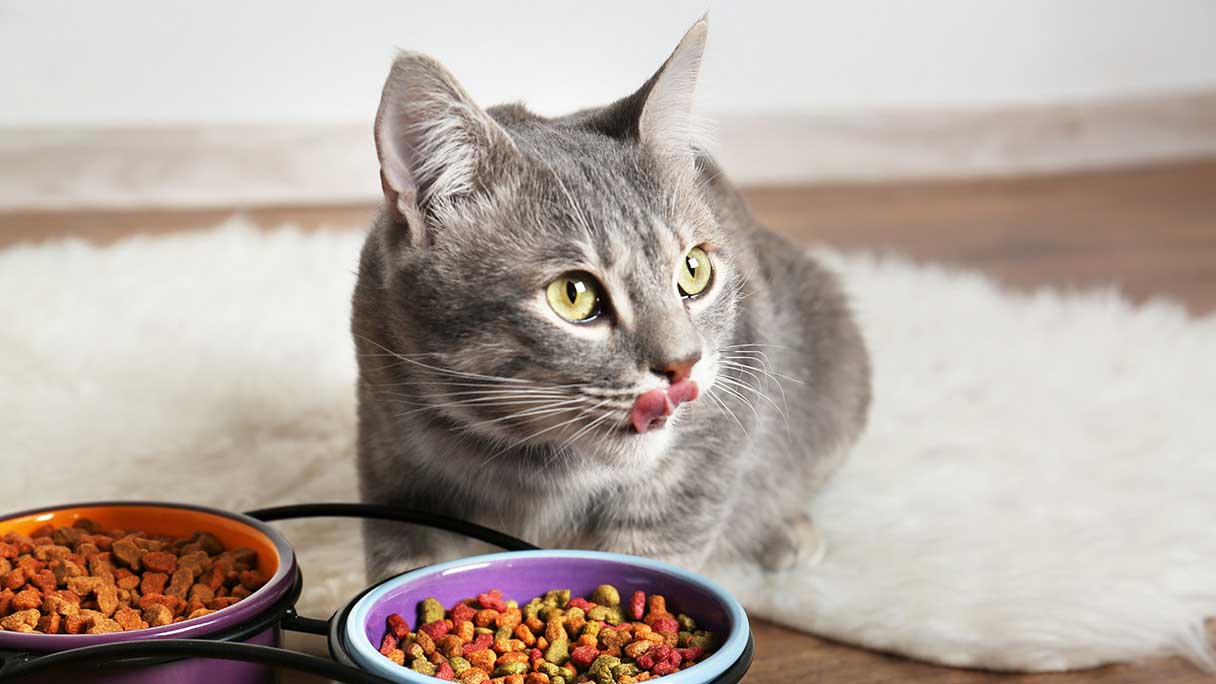Many cat owners may opt to spay or neuter their cats in order to help reduce the cat population and avoid unwanted kittens. But did you know that spaying and neutering are also good for your kitty’s overall health? Unless you intentionally plan to breed your cat, it’s generally recommended to have them spayed or neutered for the good of their health and longevity. Learn more about these procedures, including how much they cost and the benefits they offer for cats and cat parents alike.
Spaying and Neutering Cats Explained
Spaying and neutering are both sterilization procedures involving the removal of a cat’s reproductive organs.
- Spaying. Female cats are spayed, which refers to either of two procedures: ovariohysterectomy (removal of both the uterus and the ovaries) or ovariectomy (only the ovaries are removed).
- Neutering. Male cats are neutered, which is the removal of both testicles in a procedure known as an orchidectomy.
For maximum health and behavioral benefits associated with spaying and neutering, it’s generally recommended for kittens to be spayed or neutered when they reach five months of age. These are safe procedures that can be done on any cat that is both old enough and healthy enough to undergo anesthesia.
Benefits
Spaying and neutering offer both health and behavioral benefits for cats and their keepers, including:
- Decreases aggression and fighting
- Eliminates or reduces the chance of reproductive cancers and diseases
- Prevents heat cycles in female cats
- Reduces territorial marking and spraying in males
- Removes any chance of unwanted kittens
How Much Does It Cost to Spay or Neuter a Cat?
The national average cost* of spaying a female cat (under 6 months old) is $322 but can range between $255 to $587.1
The national average cost* of neutering a male cat (under 6 months old) is $212 but can range between $168 to $385.1
Where you live, as well as whether you have the procedure done at your vet’s office, a larger clinic or a pet hospital, are among the factors that will impact the final price you pay.
Calculate the costs of spaying a cat near you*

Explore procedure costs in your area
Average cat spaying and neutering costs by state/district
Here are the average costs* of cats spaying and neutering for all 50 states and the District of Columbia:1
| State/District | Average cost (spaying under 6 months) | Average cost (neutering under 6 months) |
|---|---|---|
| Alabama | $272 | $177 |
| Alaska | $380 | $253 |
| Arizona | $336 | $218 |
| Arkansas | $268 | $176 |
| California | $429 | $283 |
| Colorado | $328 | $214 |
| Connecticut | $347 | $227 |
| Delaware | $316 | $208 |
| District of Columbia | $436 | $287 |
| Florida | $318 | $209 |
| Georgia | $283 | $186 |
| Hawaii | $576 | $380 |
| Idaho | $312 | $206 |
| Illinois | $293 | $192 |
| Indiana | $279 | $183 |
| Iowa | $275 | $182 |
| Kansas | $268 | $176 |
| Kentucky | $286 | $188 |
| Louisiana | $286 | $187 |
| Maine | $337 | $221 |
| Maryland | $357 | $235 |
| Massachusetts | $452 | $295 |
| Michigan | $278 | $183 |
| Minnesota | $296 | $194 |
| Mississippi | $259 | $170 |
| Missouri | $274 | $179 |
| Montana | $318 | $209 |
| Nebraska | $288 | $190 |
| Nevada | $313 | $205 |
| New Hampshire | $348 | $229 |
| New Jersey | $355 | $232 |
| New Mexico | $288 | $189 |
| New York | $384 | $252 |
| North Carolina | $303 | $198 |
| North Dakota | $285 | $187 |
| Ohio | $291 | $192 |
| Oklahoma | $264 | $175 |
| Oregon | $345 | $227 |
| Pennsylvania | $296 | $193 |
| Rhode Island | $347 | $229 |
| South Carolina | $297 | $194 |
| South Dakota | $286 | $188 |
| Tennessee | $279 | $184 |
| Texas | $285 | $188 |
| Utah | $317 | $208 |
| Vermont | $354 | $232 |
| Virginia | $313 | $205 |
| Washington | $355 | $231 |
| West Virginia | $260 | $170 |
| Wisconsin | $301 | $196 |
| Wyoming | $295 | $194 |
Less expensive spaying and neutering services may be available at some veterinary schools, low-cost clinics, shelters and animal societies.1
Does Pet Insurance Cover Spaying or Neutering?
While not all pet insurance policies are the same, many pet insurance companies don’t include spaying and neutering in their primary accident and injury plans. However, some companies do cover these procedures as part of additional health and wellness plans that help pay for routine care.2
Your provider may have stipulations on how long your cat or kitten needs to be enrolled in coverage prior to having the procedure done, so it’s important to review your pet insurance policy and talk to your provider about the specifics regarding your pet’s plan.
How a Spaying or Neutering Procedure Works
To help your kitty throughout the spaying or neutering procedure, here are some tips below.
Preparation
In preparation for either spaying or neutering, your cat will need to fast from food starting the night before their surgery. Your vet will do a preoperative checkup and, if there are potential health concerns, a blood panel to check for any health issues that might make it too dangerous to undergo anesthesia.
Procedure
During the procedure, your cat will be given an intravenous supply of fluids and pain medications as they’re placed under general anesthesia. Your vet will make a small incision at the site of the reproductive organs. For spaying female cats, this is at the midpoint of the abdomen. For neutering male cats, the incision is made along the scrotum.
The ovaries or testes will be removed via this incision, and then it will be stitched up if needed. With neutering, the incision is often small enough that it doesn’t need stitches.
Recovery
After the procedure, your kitty will be injected with pain medication and monitored closely while the anesthesia wears off. Cats are usually ready to go home within 12 to 24 hours following spay or neuter surgery.
Potential Complications and Side Effects of Spaying or Neutering
The greatest potential complication associated with spaying or neutering is from general anesthesia. This is why your vet will run tests on your cat prior to surgery to ensure they’re healthy and minimize the potential of this happening.
For female cats, other potential complications and side effects of spaying include:
- A hernia developing in the abdominal wall
- Inflammation or infection at the incision site
- Internal bleeding, either during or after surgery
- The incision opening up
- Uterine infections if the uterus is not fully removed
Internal bleeding, herniation and uterine infections are all rare occurrences. The other possible side effects can be prevented or mitigated with an e-collar or a onesie to keep the cat from licking the incision. Also, spayed cats may be more susceptible to bladder infections and urinary incontinence, although this is not very common.
For male cats, other potential side effects of neutering include inflammation, infection and swelling at the incision site.
One other complication of spaying and neutering that’s common to both female and male cats is weight gain due to changes in reproductive hormone levels. You may need to monitor your kitty’s weight and adjust their diet to keep them from becoming overweight.
Helping Your Cat Recover From Spay or Neuter Surgery
Following surgery, your cat may take up to 48 hours to fully recover from the anesthesia. Resulting behavioral changes may include:
- Glassy and unfocused eyes
- Irritability
- More vocalization than usual
- Nausea or decreased appetite
- Shivering
- Sleepiness
- Wobbly or unsteady movement
If your kitty is allowed to go home before these effects completely subside, encourage them to get up and move around every now and then to help the anesthesia wear off. For the first 48 hours after surgery, offer small amounts of food and water until they fully recover from their nausea.
Your vet will provide instructions for caring for the incision and managing pain. It will be important to keep the incision clean and dry until it heals. Your kitty will likely need to wear an e-collar or a onesie to keep them from licking the incision. Exercise should be limited for 10 to 14 days after surgery, and you’ll need to help them avoid strenuous movement.
Spaying and Neutering for the Health of Your Cat
While spaying and neutering aren’t without potential for complications, they are both generally safe and effective procedures with benefits that far outweigh the drawbacks. Both procedures can reduce or eliminate life-threatening illnesses, contributing to a longer, healthier and happier life for your cat.
CareCredit Credit Card Financing for Cats
The CareCredit credit card is an easy way to pay for your cat’s annual checkups, food and products at veterinary practices in the CareCredit network.** Use our Acceptance Locator to find a veterinarian near you that accepts CareCredit to help keep your pet healthy and happy for a lifetime of love. CareCredit is there for you and your pet every step of the way; continue your wellness journey by downloading the CareCredit Mobile App to manage your account, find a provider on the go and easily access the Well U blog for more great articles, podcasts and videos.
In addition to pet care, you can also use your CareCredit credit card for dentistry, cosmetic, vision, hearing, health systems, dermatology, pharmacy purchases, spa treatments and so much more within the CareCredit network. How will you invest in your health and wellness next?
Expert Reviewer
Dr. Kathy Wiederkehr (Wentworth), V.M.D.
Dr. Kathy Wiederkehr (Wentworth) has been practicing veterinary medicine at pet care facilities in California since 2001. Most recently, she served as medical director of the VCA PetPoint Medical Center and Resort in Irvine. She is a graduate of the University of Pennsylvania School of Veterinary Medicine and became board-certified as a diplomate in Canine and Feline Practice by the American Board of Veterinary Practitioners in 2010.
Author Bio
Jean Marie Bauhaus is a freelance writer and novelist who has been writing pet content since 2013. Her work has appeared on Forbes.com, Hill’s Pet, Chewy, AKC.org and more.







